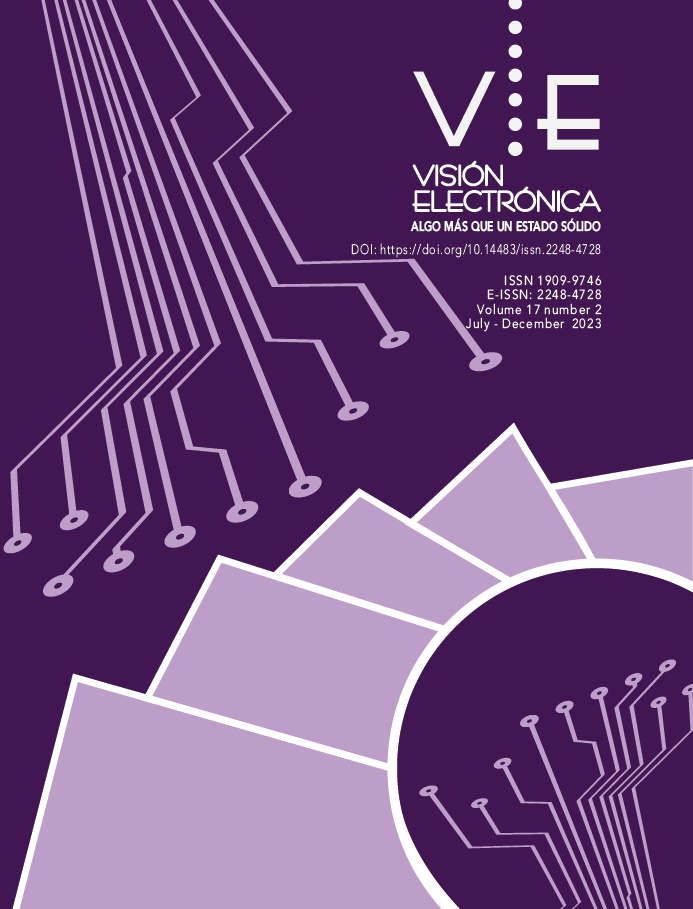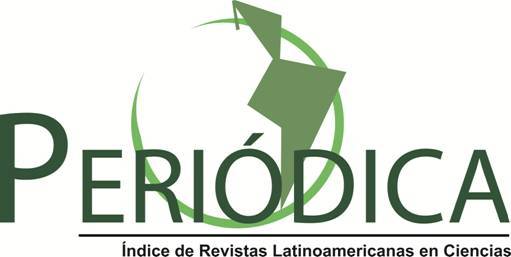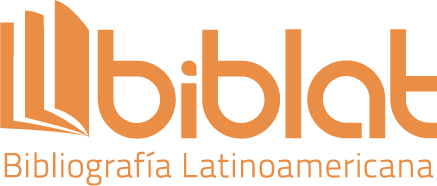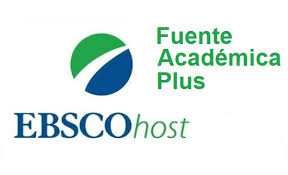Publicado:
2024-10-03Número:
Vol. 18 Núm. 2 (2024)Sección:
Visión InvestigadoraApproach to the diagnosis of cesarean delivery using bio- inspired models
Aproximación al diagnóstico del parto por cesárea mediante modelos bio-inspirados
Palabras clave:
Artificial Intelligence, Bio-Inspired, Cesarean Section, Classification, Electrohystereography (EHG) (en).Palabras clave:
Inteligencia Artificial, Bio-Inspirado, Cesárea, Clasificación, Electrohistereografía (EHG) (es).Descargas
Resumen (en)
In 2021, the cesarean section-related maternal mortality rate in Colombia was 46.4%. Efforts to reduce this rate have focused on monitoring maternal health, but the high volume of data and patient load complicate comprehensive symptom tracking. This study introduces a bio- inspired model for classifying cesarean deliveries using demographic information and electrohystereographic (EHG) biosignals from the mother-child dyad. The implemented classifiers include K-nearest neighbors (KNN), multilayer perceptron (MLP), support vector machines (SVM), and deep learning algorithms.
For demographic data analysis, KNN achieved a sensitivity (S) of 100% and a specificity (ES) exceeding 80%, while SVM recorded an S of 75% and an ES of 83.3%. In EHG analysis, MLP demonstrated an S of 82.3% and an ES of 85.7%, followed by deep learning with an S of 72.8%. This model facilitates early detection of cesarean births by integrating maternal history and fetal behavior data.
Resumen (es)
La tasa de mortalidad materna por cesárea de Colombia en 2021 es 46,4 %, para disminuirlo, profesionales de la salud dan seguimiento a las gestantes, sin embargo, la densidad de información y el volumen de pacientes hace complejo tener en cuenta la sintomatología. Este artículo desarrolla un modelo bio-inspirado para la clasificación de parto por cesárea, basado en información demográfica y la bioseñal Electrohistereograma (EHG) del binomio madre-hijo. Los clasificadores son k vecinos más cercanos (KNN), perceptrón multicapa (MLP), máquinas de vectores de soporte (SVM) y aprendizaje profundo. Finalmente, se calcula el rendimiento.
El mejor desempeño del análisis de datos demográficos se obtiene con: KNN con sensibilidad (S) del 100 % y especificidad (ES) de más del 80 % junto a SVM con S del 75 % y ES del 83,3 %. El mayor rendimiento en el análisis del EHG son MLP con S de 82.3 % y ES de 85.7 %. Esta herramienta brinda apoyo a la detección temprana de nacimientos por cesárea, teniendo en cuenta los antecedentes de la gestante y el comportamiento del feto.
Referencias
U. Nations, "ECLAC - United Nations," 2015. [Online]. Available: https://www.cepal.org/es/temas/objetivos-de-desarrollo-del-milenio-odm/.
E. A. Alfonso, A. D. Arcila and M. L. Latorre, "Atlas de Variaciones Geográficas en Salud de Colombia 2015- Estudio," Ministerio de Salud y Protección Social, 2015.
DANE, "DIRECCIÓN DE CENSOS Y DEMOGRAFÍA - ESTADÍSTICAS VITALES EEVV," DANE, Bogotá, 2021.
E. a. M. J. a. H. M. Nodelman, "Using artificial intelligence to predict spontaneous preterm delivery," American Journal of Obstetrics and Gynecology, ISSN 00029378, vol. 222, no. 1, p. 1, 2020.
M. Tahir and T. Badriyah, "Neural Networks Algorithm to Inquire Previous Preeclampsia Factors in Women with Chronic Hypertension During Pregnancy in Childbirth Process," International Electronics Symposium on Knowledge Creation and Intelligent Computing (IES-KCIC), pp. pp. 51-55, 2018.
A. a. R. C. W. G. a. P. A. T. a. J. I. a. G. A. Petrozziello, "Multimodal Convolutional Neural Networks to Detect Fetal Compromise During Labor and Delivery," IEEE Access, ISSN 2169-3536, vol. 7, no. 1, pp. 112026--112036, 2019.
K. M. M. N. P. T. P. M. Mcdonnell NJ, "Analgesia after Caesarean Delivery," Anaesthesia and Intensive Care, pp. 539-551, 2009.
G. E.-A. Escalante-Gaytán J, "Utilidad de la electrohisterografía como técnica de monitorización uterina en el ámbito clínico: revisión bibliográfica," Ginecologia y Obstetricia de Mexico, vol. 87, no. 1, pp. 280-285, 2019.
A. Moujahid, I. Inza and P. Larranaga, "Universidad del País Vasco," 14 07 2022. [Online]. Available: http://www.sc.ehu.es/ccwbayes/docencia/mmcc/docs/t9knn.pdf.
D. Morariu, R. G. Cretulescu and M. Breazu, "THE WEKA MULTILAYER," International Journal of Advanced Statistics and IT&C for Economics and Life Sciences, pp. 1-9, 2017.
A. Kowalczyk, "Support Vector Machines Succinctly," Succinctly free ebooks, p. 114, 2017.
. J.-H. Wang and S.-J. Lou, "Predicting the success rate of natural spontaneous delivery
through deep learning," 2019 IEEE International Conference on Consumer Electronics - Taiwan (ICCE-TW), 2019.
D. L. Guzmán, M. Carreno and L. H. Camargo, "Identifying Sleep Apnoea and Hypopnoea Episodes From Respiratory Polygraphy Signals," Revista Colombiana de Psiquiatría, vol. 46, no. 2, pp. 88-94, 2017.
A. Goldberger, L. Amaral and L. Glass, "Components of a new research resource for complex physiologic signals," PhysioNet, p. 101, 2000.
T. M. Nair, "Statistical and artificial neural network-based analysis to understand complexity and heterogeneity in preeclampsia," Computational Biology and Chemistry, vol. 75, pp. 222-230, 2018.
R. E. Behrman and A. Stith Butler, "Preterm Birth: Causes, Consequences, and Prevention," the National Academies Press, p. 790, 2007.
C. D.-B. Manuel Gómez-Gómez and M. Aceves-Gómez, "Classification of the newborns,"
Revista Mexicana de pediatría, vol. 79, no. 1, pp. 32-39, 2012.
J. Panduro-Barón, E. Panduro-Moore and J. Pérez-Molina, "Changes in fetal static and their predisposition to risk factors throughout of pregnancy," Ginecología y obstetricia de México, vol. 85, no. 8, 2017.
K. Kammerer, R. Pryss and B. Hoppenstedt, "Process-Driven and Flow-Based Processing of Industrial Sensor Data," Sensors (Basel), vol. 20, no. 18, p. 5245, 2020.
Q. Q. a. X. Z. b. Y. A. a. J. P. a. L. Y. a. D. Z. c. Dongmei Hao a, "Application of decision tree in determining the importance of surface electrohysterography," Biocybernetics and Biomedical Engineering, vol. 39, no. 3, pp. 806-813, 2019.
K. H. R. F. Muhammad Ehsan Ul Haq, "Use of Machine learning models for predicting and improving maternal and child health indicators," IEEE-SEM, vol. 9, no. 8, pp. 1-12, 2021.
M. B. M. S. a. P. A. Somayeh Mohammadi Far, "Prediction of Preterm Delivery from Unbalanced EHG Database," Sensors (Basel), vol. 22, no. 4, p. 1507, 2022.
Y. Y.-L. J. G.-C. ,. J. A.-R. A. P. a. G. P.-B. Carlos Benalcazar-Parra, "Prediction of Labor Induction Success from the Uterine Electrohysterogram," Journal of Sensors, vol. 2019, no. 1, p. 12, 2019.
E. L. A. RodrÍguez, "Early Prediction of Extreme Maternal Morbidity Using Machine Learning," TECHNOLOGICAL UNIVERSITY OF BOLIVAR, Cartagena, 2017.
S.YASUI, "Cesarean section," Japanese journal of medical science and biology, vol. 49, no. 6, pp. 1036-1040.
PhysioNet, "PhysioNet is a repository of freely-available medical research data, managed by the MIT Laboratory for Computational Physiology," PhysioNet, [Online]. Available: https://physionet.org/about/. [Accessed 20 Junio 2021].
D. a. n. d. e. DANE, "GIT Estadísticas Vitales - EEVV," Departamento administrativo nacional de estadística DANE, 2021.
Cómo citar
APA
ACM
ACS
ABNT
Chicago
Harvard
IEEE
MLA
Turabian
Vancouver
Descargar cita
Visitas
Descargas
Licencia
Derechos de autor 2024 Visión electrónica

Esta obra está bajo una licencia internacional Creative Commons Atribución-NoComercial 4.0.
.png)
atribución- no comercial 4.0 International






.jpg)





